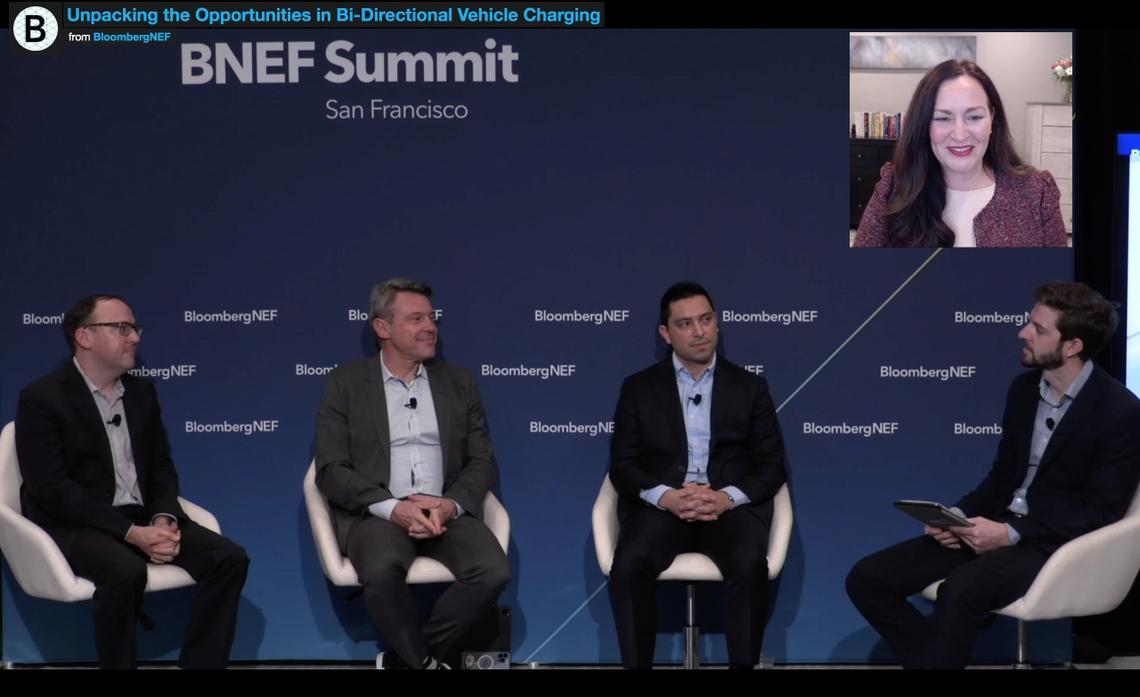Can EVs Power the Grid?
SCE says there are a few hurdles, but we are not that far off during a panel exploring the future of vehicle-to-grid technology.
By Paul Griffo
By 2030, up to half of new electric vehicles could be capable of charging their batteries while they’re plugged in and discharging electricity stored in their batteries back onto the power grid.
This “bidirectional” capability opens up the possibility that EV owners could be paid for the power they make available to the grid.
But there are still a few technological and regulatory hurdles before getting to that point, said Katie Sloan, Southern California Edison vice president of Customer Programs & Services. Sloan was a member of an expert panel that explored the future of vehicle-to-grid technology, or V2G, at the recent BNEF Future of Mobility Summit- Opens in new window in San Francisco.
While technology that would allow EV batteries to deliver energy to the grid isn’t quite ready for the market, there are other types of “vehicle-grid integration” technologies that SCE is currently using in its EV charging programs,- Opens in new window she said.
“We’re taking a phased approach to deploying these technologies,” said Sloan. “The early phase we are in now, called V1G, enables EV owners to program their EVs so they can respond to electronic signals to charge when more renewable resources are available on the grid, or they can take advantage of lower energy prices during off-peak hours.”
These demand response- Opens in new window and Time-of-Use rate- Opens in new window options are the first steps to implementing bidirectional technology, she said. Although EV owners can’t yet sell power to the grid, they can reduce energy costs while at the same time allowing electric utilities to manage energy demands from EVs. EV owners can also use their batteries to temporarily power their homes in the event of an outage.
The lessons being learned about user-friendliness in this first phase can also be applied to later phases. “We want to focus on ease for the customer, remembering that at the end of the day, the customer isn’t purchasing the vehicle to be our utility grid asset, they’re purchasing the vehicle to drive,” said Sloan. “If you have an electric vehicle, you can set it and forget it, and know that your car is responding to time-of-use signals. We want it to be just as easy when we get to full vehicle-to-grid integration.”
She noted that getting there may not be all that far off because of recent advances.
One of the contributors to this advancement is SCE. Last year, the electric company launched a demonstration project- Opens in new window that will attempt to validate whether V2G could reduce customers’ electric bills in exchange for the energy they supply when their EVs are connected to the grid. The project will also examine the standardization of equipment necessary to make those connections possible.
Sloan added that implementing bidirectional technology could also figure prominently when making future clean energy investments in the grid, saying, “Vehicle-to-grid could help reduce the amount of investment we need to make and the time it will take to make that investment.”
She added, “We’re looking at having 26 million electric vehicles- Opens in new window in California by 2045, up from just a million today. So it really is a huge opportunity.”





